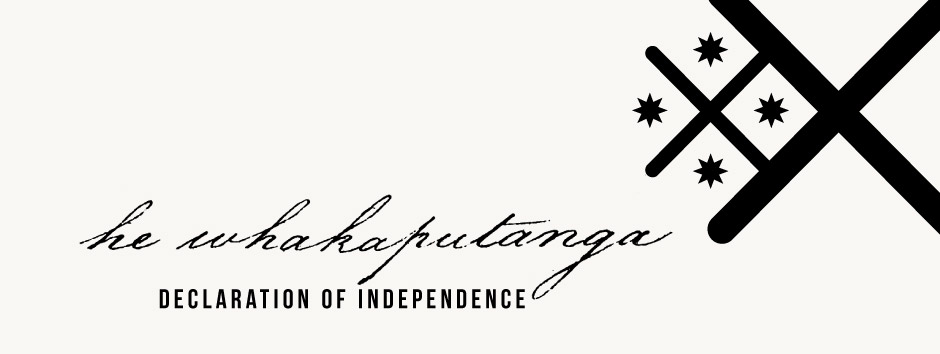Signing details
Tāmati Wāka Nene was a leading rangatira and tohunga of the Hokianga region. Born around the 1780s, he was the second son of Tāpua and the younger brother of Patuone. Through his mother, Te Kawehau, Nene was related to Hongi Hika, and to the brothers Rewa, Moka and Te Wharerahi.
During taua of the 1810s and 1820s, Nene distinguished himself as a military leader. He took part in the large expedition that travelled as far south as Te Whanganui-a-Tara (Wellington Harbour), and when the group spotted a sailing ship in Cook Strait, Nene is said to have advised Te Rauparaha to settle in the area in order to control access to European trade.
Around this time Nene became the most important chief among his own people. He was tasked with protecting the Wesleyan (Methodist) mission (which had moved to Hokianga in 1827) and traders. The desire to access European trade sometimes saw Nene opposed to Moetara, and sometimes to Makoare Te Taonui. In 1839, he was baptised Tāmati Wāka after Thomas Walker, an English merchant patron of the Church Missionary Society.
Nene was one of 13 rangatira to sign the 1831 letter to King William IV. He was also present at the selection of Te Kara, the United Tribes’ flag, in 1834, and was the first to sign the codicil of He Whakaputanga, which he did soon after 28 October 1835. At the Waitangi hui of 5 February 1840 Nene was a crucial voice in favour of Te Tiriti o Waitangi, and was the first Māori speaker at the 1860 Kohimarama conference. He is the only known rangatira to have participated in all five events.
During the 1845–46 Northern Wars, Nene sided with the British against Hōne Heke Pōkai and Te Ruki Kawiti. Although long-standing conflicts played a part, he was also anxious to protect his trading links with the British. He was known for his friendly relationships with traders, missionaries and government officials – his prestige among Europeans was great, and as a government advisor he attended many important events before his death in 1871. He was buried with Church of England rites at Kororāreka (Russell).


Community contributions